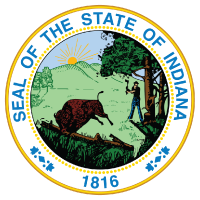Monday, October 25, 2021
Blog topics: Archive
 Each October, Cybersecurity Awareness Month raises awareness about the importance of cybersecurity across our Nation, ensuring that all Americans have the resources they need to be safer and more secure online. The initiative’s theme of “Do Your Part. #BeCyberSmart” encourages individuals and organizations to own their role in protecting their part of cyberspace, stressing personal accountability and the importance of taking proactive steps to enhance cybersecurity.
Each October, Cybersecurity Awareness Month raises awareness about the importance of cybersecurity across our Nation, ensuring that all Americans have the resources they need to be safer and more secure online. The initiative’s theme of “Do Your Part. #BeCyberSmart” encourages individuals and organizations to own their role in protecting their part of cyberspace, stressing personal accountability and the importance of taking proactive steps to enhance cybersecurity.
Our growing dependence on technology systems - coupled with emerging, evolving, and increasingly deceptive cyber threats - demands enhanced awareness and vigilance when it comes to our online world. It is especially important for schools, parents, and students to stay safe online by defending against risks and strengthening cyber safety and security both at home and within schools.
Helpful tips for improving cybersecurity in your school’s community include:
- Double your login protection. Enable multi-factor authentication for all accounts and devices to ensure that the only person who has access to your account is you.
- Shake up your password protocol. Consider using the longest password or passphrase permissible. Get creative and customize your standard password for different sites, which can prevent cyber criminals from gaining access to these accounts and protect your and your school’s accounts in the event of a breach.
- Update security software. Whether you’re using a school’s computer, smartphone, or other device, the best defense against viruses and malware is to update to the latest security software, web browser, and operating systems.
- Play hard to get with strangers. Cyber criminals use phishing tactics, hoping to fool their victims. If you’re unsure who an email is from – even if the details appear accurate – or if the email looks ‘phishy,’ do not respond and do not click on any links or attachments found in that email.
In addition, bookmark these key cybersecurity resources to keep your students and schools safe online:
General Resources and Websites
- Stop.Think.Connect. Parent and Educator Resources: This webpage outlines essential resources and materials for parents and educators to help start the discussion about cyber safety and cybersecurity with children and students. Find information about safe social media practices, what it means to “be online,” how to become a good digital parent, and more.
- Be Cyber Smart: This campaign is designed to inspire the younger generation of Americans to take responsibility for their own cyber safety. Learn about cybersecurity basics, common scams, and how to report cybersecurity incidents.
- StopRansomware.gov: This website is a one-stop resource where public and private sector entities can find U.S. government tools, information, and resources to help reduce the risk of ransomware attacks and improve resilience. The site includes a specific K-12 resource section, which includes information geared towards IT staff, students, parents, and administrators.
- Keeping Children Safe Online: This website offers guidance for teachers, parents, guardians, and caregivers on protecting children from becoming victims of online exploitation.
Fact Sheets, Videos, and Tip Cards
- Cyber Threats to K-12 Remote Learning Education: This fact sheet is a primer for non-technical educational professionals, and includes general cybersecurity best practices, video-conferencing best practices, and a list of available resources.
- Cyber Safety Considerations for K-12 Schools and School Districts: This fact sheet provides information to students, teachers, and administrators on identifying cyber threats, educating students on responsible online behavior, and learning how to prevent, prepare for, and respond to a potential cybersecurity incident.
- Cyber Safety Video Series: This series of short videos – centered around themes such as social media safety, ransomware, phishing, and making strong passwords – outlines tips and best practices to help schools, students, and educators stay safe online.
Visit SchoolSafety.gov to access additional cybersecurity resources and guidance and follow @SchoolSafetyGov on Twitter for other timely school safety updates.
SchoolSafety.gov Disclaimer
The U.S. Department of Homeland Security (DHS), U.S. Department of Education (ED), U.S. Department of Justice (DOJ), and U.S. Department of Health and Human Services (HHS) do not endorse any individual, enterprise, product, or service. DHS, ED, DOJ, and HHS do not mandate or prescribe practices, models, or other activities described in this communication. DHS, ED, DOJ, and HHS do not control or guarantee the accuracy, relevance, timeliness, or completeness of any information outside of those respective Departments, and the opinions expressed in any of these materials do not necessarily reflect the positions or policies of DHS, ED, DOJ, and HHS.

